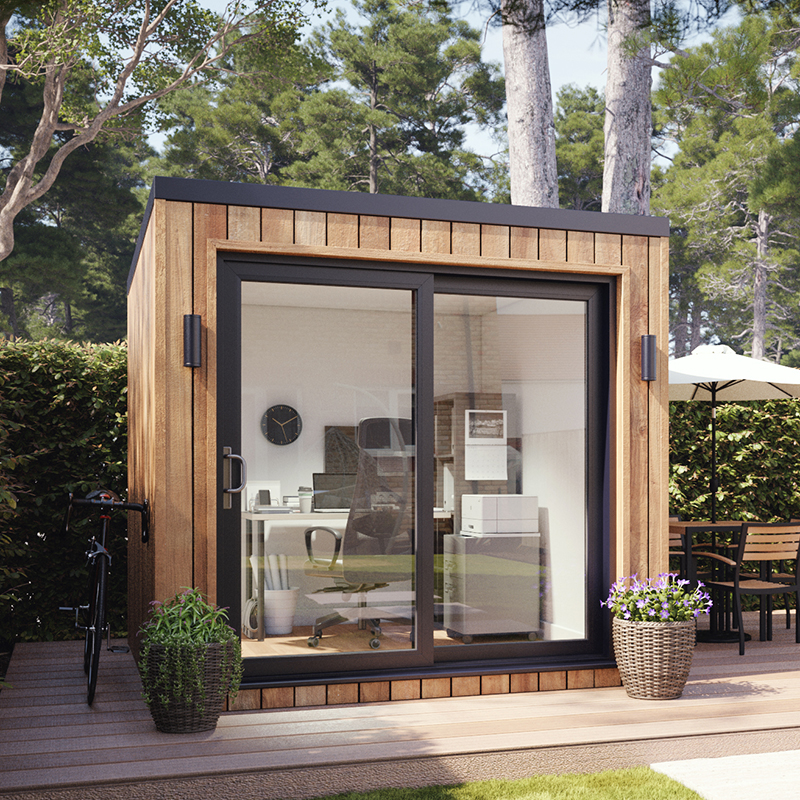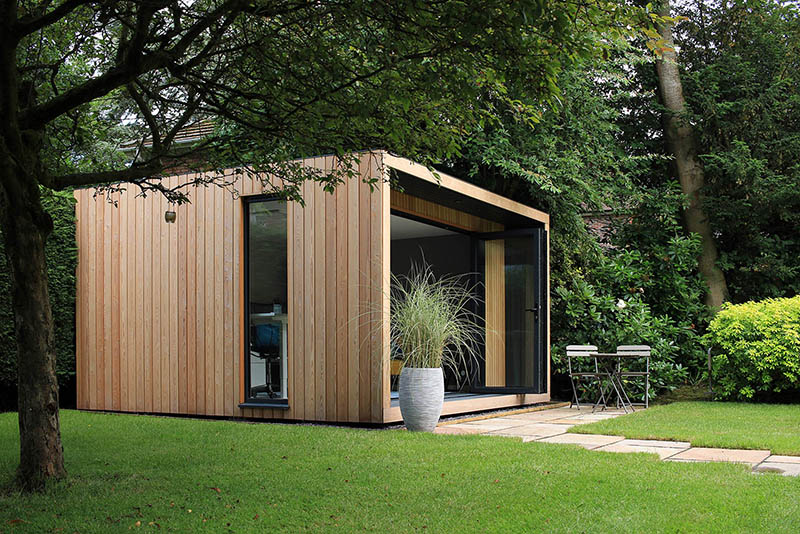Top Info For Planning Permission For Garden Summer Houses
Wiki Article
What Type Of Planning Permission Will You Need To Change The Usage Of Your Garden Room, Etc.?
Planning permission may be required for the construction of garden rooms, conservatories and outhouses. Planning permission considerations related to a change of use are: From non-residential to residential usage:
If you plan to transform a non-residential structure (like a garage or an agricultural structure) into a residential space or garden office the permission to plan is normally required. This is because any modification in the usage of the structure will be required.
Garden Rooms as Living Spaces:
It is considered a "change of use" when you convert an existing garden into an additional dwelling for guests, like a guest house. The structure must be inspected by the authority responsible for planning to meet residential standards.
Business Use
You might require planning permission if you intend to utilize a garden space or conservatory for business purposes for example, an office or place of business with frequent employees or visitors. This is due to the effect it can impact the surrounding area, such as traffic noise, parking and other.
For Community or Educational Use
In order to transform an existing garden building to be a learning space or other community-based events (such as classrooms or meeting rooms), you will also need planning permission. Local authorities will assess whether the property is suitable for use and what impact it may have on the local area.
Impact on Local Infrastructure
Any alteration in use that is a significant impact on the infrastructure of the area (e.g. roads, drainage systems, public services, etc.) will likely require planning approval. This will be evaluated by the local planning authority at the time of the process of applying for permission.
Dual Use
If a property is going to have a mixed use (such as commercial, residential or part-commercial) the need for planning permission is usually required to clearly define and govern the different uses within the property.
More Traffic and Footfall
The local planning authority will have to approve the change should it cause an increase in traffic or footfall.
Building Regulations:
Although it is not a strictly planning permission issue however, any alteration of the use should be in accordance with building regulations to guarantee security, health, and energy efficiency standards. This is particularly true when it comes to conversions of non-habitable areas to habitable areas.
Environmental Impact:
Changes in use that may affect the environment, for example changing agricultural land into residential uses, require planning approval. The application could require an environmental evaluation.
The Community Effect and the Amenity Effect
Impact on community amenities as well as the character of an area are the most important factors to take into consideration. As an example for converting a space in the garden into a coffee shop would require approval from the planning department. This is to ensure that it is in line with community plans while preserving local amenities.
Designated Zones:
In conservation areas, National Parks (AONB) or Areas of Outstanding Natural Beauty, changes in use are subject to greater scrutiny in order to protect the nature of the region. These cases require planning permission.
Local Planning Policies
Local authorities for planning have specific policies on changes to usage that can vary greatly. These policies are important in understanding the changes that require approval and what criteria needs to be met.
In summary Planning permission is usually needed for any significant modification to the use of a garden space, conservatory outhouse, garden office or extension. This is to ensure that the proposed use is appropriate for the area, is in line with local and national policies on planning, and also addresses any potential negative impacts to the environment and community. Early discussion with the local planning authority is essential to establish particular requirements and get approvals. Check out the top modern cedar garden rooms for more examples including garden room planning permission, 4m x 4m garden room, what size garden room without planning permission, outhouse for garden, garden out house, Tring garden rooms, myouthouse, garden rooms, conservatories and garden rooms, small garden office and more.

What Planning Permits Are Required For Garden Rooms Or Other Areas. In Terms Of Listed Structures?
Planning to build gardenrooms outhouses, conservatories, and garden rooms along with garden offices or extensions within the grounds of listed buildings requires special considerations. Stricter regulations also apply. Here are some important points to remember when obtaining planning permission for these projects A listed building permit:
In the majority of cases, any alteration of extension, alteration or construction within the immediate vicinity of a listed property requires both listed building and planning consent. This is because any alteration could have an impact on the particular character or interest of a listed building.
The impact on the character of historical characters:
Planning permission is required for any new structure or extension that might alter the historic character or appearance of the listed building or its setting. This includes garden buildings and outbuildings.
Design and Materials
The materials and design of the new structure should be in keeping with the historical and architectural significance of the listed building. It could require the use and design of materials from the past. This will also require planning permission.
The building is located in close proximity to the listed building
The effect of new construction close to a heritage building are assessed to determine whether they affect the structure's character. It will be necessary to obtain planning permission in order to ensure that new buildings will not change the appearance of the building.
Size and Scale
The size and dimensions of the garden room, conservatory or extension must be proportionate and in harmony with the listed structure. More substantial structures need careful planning and evaluation.
The location on the property
The position of the new structure (whether towards the front, side, or rear of the listed building) could affect the need for planning permission. Locations that are visible or have a major impact on the building's key views will usually be subject to a more thorough evaluation.
Changes in the internal structure:
If the new structure is separated from the existing building Any changes that are made to it (such as the addition of new access points), will also need planning and listed building permission.
Conservation Area Overlap
The listed building should also be located in a Conservation Area. Planning approval is required in order to make sure that the building is compliant with both listed buildings and conservation area regulations.
Building Use:
Planning permission can be required depending on the intended use of a garden area or an outbuilding. The use of the space that implies a major alteration, such as commercial or residential uses are subject to greater scrutiny.
Structural Impact:
Planning permission is required for any project that could affect the structural integrity or structure. This will ensure that the old and new structures are seamlessly integrated.
Local Authority Guidelines:
Local authorities usually provide specific guidelines to listed buildings, which define the types of construction and modifications that are permitted. Planning permission is needed to ensure these guidelines are followed.
Professional Assessments
Conservation experts often need to conduct detailed assessments of proposed work on listed buildings. These assessments are used to determine whether modifications proposed are suitable and also to back the application for planning permission.
Summary: Planning permission and listed-building approval are usually required when creating conservatories, garden rooms or outhouses. This also applies to extensions, garden offices and garden offices that are connected to a listed property. Consult with your local planner and heritage professionals very early on in the planning process to ensure compliance to all applicable regulations and to ensure the preservation of historical and architectural integrity. Have a look at the recommended how big can you build a garden room for blog advice including armoured cable for garden room, conservatories and garden rooms, luxury outhouse, Tring garden rooms, outhouse for garden, garden rooms, do i need planning permission for a garden room with toilet, do i need planning permission for a garden room with toilet, garden room or extension, copyright garden office and more.

What Planning Permission Do You Require For Gardens, Etc. In Regards To Location Restrictions?
It is essential to consider location restrictions when you are planning to construct garden offices, conservatories or outhouses. Consider these key criteria when determining the location of your structure The distance from borders
A building that is less than 2 meters from the boundary of a property cannot be more than 2.5 meters in height. If the building's height exceeds the maximum limit, a planning permit is required.
Front of the Property
Extensions or structures which are built in the direction of the principal elevation of a house (the face-facing side) typically require planning permission. This is because allowed development rights usually prohibit them.
The property's side:
Side extensions must adhere to certain height and size restrictions and usually require planning permission if they extend beyond the existing side wall of a house.
The rear of the property
The height and size of garden extensions and rear rooms at the rear of the house is limited. If these exceed permitted development limits, planning permission will be necessary.
Designated Areas
In the areas of Outstanding Natural Beauty (AONB), National Parks and World Heritage Sites there are stricter controls. Every new building, regardless of size, could require planning permission.
The listed buildings:
The properties that are listed have strict guidelines. Planning permission and listed-building permits are usually required to build a new structure or modify an existing one, irrespective of where it is situated within the property.
Green Belt Land:
Green belt land is heavily restricted in order to preserve open space. Most of the time the construction or alteration that is major requires a special permit.
Flood Risk Zones
The construction of the new building must not cause more flooding when the property is in a flood risk zone. Planning permission and possibly a flood risk assessment could be required.
Urban vs. Rural Settings:
Urban areas often have different rules from rural ones. Rural properties can have a softer approach to limitations, like the size or location of outbuildings.
Highways, Public Rights of Way and Public Rights of Way
If the structure is situated close to roads, highways, or rights of way for public use, planning permission may be required to ensure that the structure doesn't block views and access, or compromise safety.
Shared Ownership and Leasehold Land
If the property is being rented or a part of an ownership sharing plan, it might require additional permissions. Planning permission might also be required depending on the local laws.
Contiguous to Other Structures:
It is possible to seek planning permission when a new structure is going to be built near existing structures or buildings, especially on neighbouring properties. It will guarantee that the building or land surrounding it will not be adversely affected.
It is always recommended to speak with the local planning authority in order for specific guidance tailored to the location of your home and specific circumstances. Local laws can impact regulations, so it's important to make sure you're in the compliance of all restrictions. Read the top rated garden room extensions for blog info including garden room heater, garden outhouses, my outhouse, outhouse uk, outhouse garden rooms, luxury outhouse, garden rooms brookmans park, garden out house, what size garden room without planning permission uk, garden room planning permission and more.
